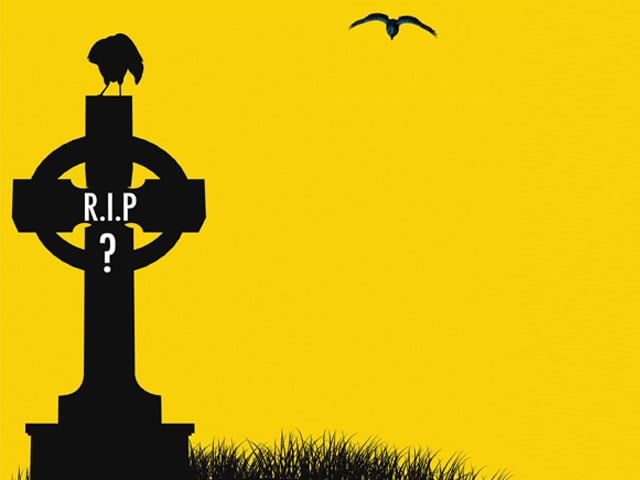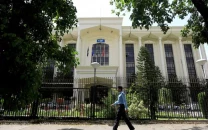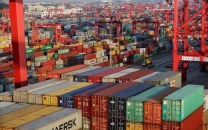Byte-ing into the print industry?
A balance will eventually be struck, with print and online complimenting each other instead of being in conflict.

It may be a cliche to say that information technology has brought about a revolution, but it’s the truth. Like a global tsunami of bits and bytes, this technology has swept over every country and every civilisation. It is important to understand how information technology has affected the print industry in general and Pakistan in particular. Let us start with looking at the books industry. The last decade has seen a change in consumer habits as many people have taken to reading books online as opposed to reading conventional hardbacks or paperbacks. The number is small, limited to those who have access to the internet or ‘smart’ phones, but the amount of people doing their reading online is growing nevertheless.
While some individuals may still prefer cuddling up in their comforters with a hardback, many others find e-books, as they are called, convenient, cost effective and mobile. With the increasing use of hi-tech devices like iPhones and laptops that allow easy and constant access to the internet, more and more people are finding the new option increasingly attractive. With a dearth of quality book shops in Pakistan, it’s also much easier to find and download an e-Book rather than do the rounds of bookstores on what may well be a wild-goose chase.
Umair Mohsin, Director Digital Marketing at Media Idee Digital also has another take on the issue: “Using my iPhone to read e-books gives me the advantage of portability. I can access them from anywhere, whether I am waiting for a meeting to start or anything else. Also, I am into the green aspect so I think e-books save paper. PDF files are easier to read and bookmark as opposed to books which are analogue. I feel it is more convenient and interactive as a media.”
The idea of databases for online journals which are often used for reference material has also recently gained popularity in Pakistan. Students, teachers, academics and the like all prefer using databases like J Stor to gain access to a massive store of information and obviously, the internet allows for easy manoeuvring through these articles to find relevant information. Had the same amount of material been present in its hard copy form, the task of finding what one is looking for would have been arduous to say the least. “Using Google books and databases like Ebsco host for research makes finding what you’re looking for easier and faster,” said Kundan Noor, a recent IBA graduate. “IBA also has a digital library on its campus network where students can access e-books,” she added.
The same holds true for catalogues and promotional material. Some local companies have also started using the internet to advertise their products primarily because it allows access to hundreds of individuals at relatively low cost. There’s also greater room for interaction with customers and more opportunities for useful feedback and healthy criticism. It also allows easy access to the international market at a very minimal cost. But while this is a growing market...it’s still a very very small one. Most Pakistani advertising companies say that print media is still preferred over any form of e-advertising by most of their clients. Umair Kazi, Strategy Planner at Bullseye, said: “Clients are still relying heavily on TV and print media for advertising. The internet may be a leg of the entire campaign but the focus is always on print and TV.” It is evident that while international trends may be shifting, Pakistan simply doesn’t have enough people online for internet advertising to really take off.
Increased concern for the environment is no doubt a good thing...but it does give rise to another question: is the ‘Save the trees’ campaign going to cause the demise of the print industry? It’s not likely. While a certain portion of the market is definitely being greatly affected by digitalisation, that doesn’t mean the print industry is going to disappear any time soon. There is a portion of the market that has loyally stuck to its old habits and still prefers any and all readable material to be something they can touch and feel. “I can read [books] anywhere and in any position.. I like holding books.. it doesn’t hurt my eyes after a while [unlike reading off a screen]” said Mohammed Ali, a recent graduate from the National University of Computer and Engineering Sciences.
The same holds true for research: while some may prefer the easy option of Wikipedia, there are plenty others out there who say that there is nothing like browsing through a dozen encyclopaedias to find what you’re looking for because it’s just part of the experience. And as anyone who’s fallen victim to misinformation in a dubious Wikipedia article can testify, it’s also safer.
I feel that a balance will eventually be struck between print and online media, each catering to its own segment of the market, with both sectors complimenting each other instead of being in conflict. And as far as Pakistan is concerned, we should just be glad that people are reading at all...whether the words are on paper or on screen.
Published in The Express Tribune, January 16th, 2011.


















COMMENTS
Comments are moderated and generally will be posted if they are on-topic and not abusive.
For more information, please see our Comments FAQ